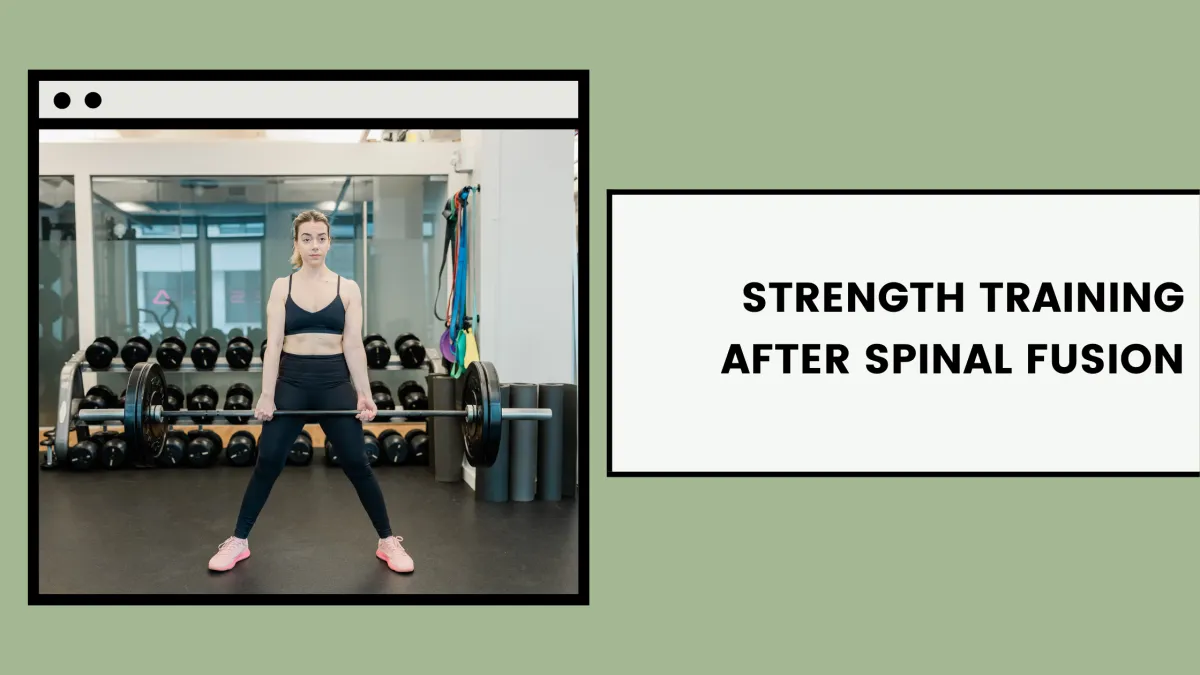Check Out The Latest Blog Posts To Learn More

Strength Training After Spinal Fusion | Strength & Spine
Strength Training After Spinal Fusion: What You Need to Know
We’ve talked a lot about all the potential benefits of strength training with scoliosis. But what about strength training after spinal fusion? Is that even possible? And if so, how do you keep your spine safe when you’re lifting weights?
For many people, strength training after spinal fusion is a safe and effective form of exercise. Every person is different, of course, but for many people, a fusion doesn’t prevent them from effectively building strength with weights.
If you want to gain strength and mobility in ways that support your spine and improve your posture, follow these steps.
1. Talk to your surgeon
It’s important to get your surgeon’s approval before starting a strength training program, especially if your spinal fusion surgery was recent. But even if your operation was years ago, it’s always a good idea to consult your medical team before starting a new exercise routine.
Your doctor can help you understand the potential benefits and risks of exercising. They can also help you set reasonable goals that align with the specific characteristics of your fusion and your overall health.
2. Consider the timing
In most cases, strength training is completely off the table during the first three months after spinal fusion surgery. Depending on the nature of your fusion and curve, you might need to wait longer. During the initial recovery period, focus on regaining basic mobility and core strength (with your surgeon’s guidance).
3. Work with a scoliosis specialist
Most standard strength training programs aren’t designed with spinal fusion in mind. To get the best results and keep your spine safe, it’s best to get guidance from an experienced professional.
A physical therapist or certified personal trainer would be a good candidate, as long as they are specially trained to work with spinal fusion candidates. By choosing someone with spinal fusion expertise, you can feel confident that the program they design for you factors in your condition, limitations, and unique goals.
Looking for a scoliosis strength training coach? We offer virtual coaching in both 1:1 and small group environments. Either option gives you the chance to work with a professional who’s an expert in strength training and scoliosis and spinal fusion.
4. Don’t neglect your core
Upper and lower body workouts are important, but it’s essential to build core strength, too, especially after spinal fusion. A strong core supports your spine and makes it easier to maintain proper posture and alignment. To improve your overall spinal stability, follow a complete core-strengthening program that includes your abdominal, oblique, and lower back muscles.
5. Use proper form
Exercising with poor form is dangerous for anyone — but it’s especially risky if you have a spinal fusion. Lifting weights with incorrect form can put unnecessary strain on the fused area and surrounding muscles, increasing your risk of injury.
Learn what proper form looks like and make sure to follow those guidelines. If you can’t maintain good form at a certain weight, drop down to a lower weight to build strength with proper form. Keep your ribs stacked over your pelvis during any movements, and make modifications as necessary. Even with a fusion, you might still have a compensatory curve you need to consider.
6. Progress gradually
Slow progress is still progress, and every little step counts. It’s easy to get frustrated if you feel like it takes a long time to build strength after spinal fusion. But overloading your spine too quickly can slow down your recovery and even cause complications with the fusion.
Start with light weights — or stick to bodyweight exercises or resistance bands for a little while. As you gradually build strength, you can move on to heavier weights. But never sacrifice your form to use a heavier weight.
And always remember to listen to your body. It’s never a good idea to “push through the pain.” Pay attention during each movement, and if anything is uncomfortable, painful, or feels “off,” stop immediately and contact your medical team.
7. Build balance and flexibility
Exercising with spinal fusion shouldn’t just be about gaining muscle. Your balance and flexibility are vital, too! Balance out your strength training with yoga, Pilates, or gentle stretching to improve your mobility. Just avoid any movements that involve twisting, bending, or excessive strain on the spine.
Strength training requires persistence
Exercise is all about the long game — it’s not a quick fix, and progress doesn’t have to be fast. Slow and steady wins the race, especially when you're regaining your strength after spinal fusion.
Listen to your body, be patient, and give yourself all the time you need to recover. Your overall health and well-being are paramount, so make sure you choose a strength training program that feels right for your body.
And remember, if you want expert support on your strength training journey, our team is here to help. Schedule a free discovery call to learn about our different coaching programs and find out which one is right for you.
WE ARE
Strong with Scoliosis
Start today on an exercise program that helps you become empowered, strong, and confident in your scoliosis curve.
FIND US
Strength and Spine
Online Sessions and Coaching
We work with clients all over the world
*Please contact us for in-person appointments*

